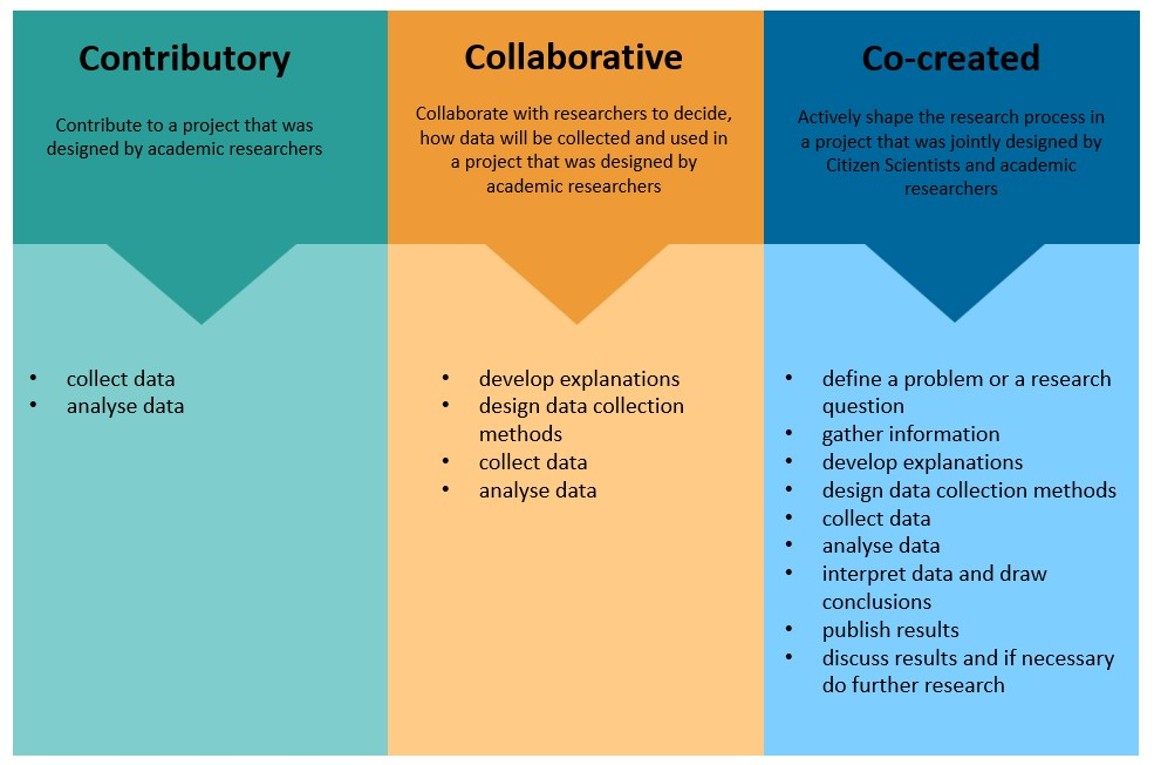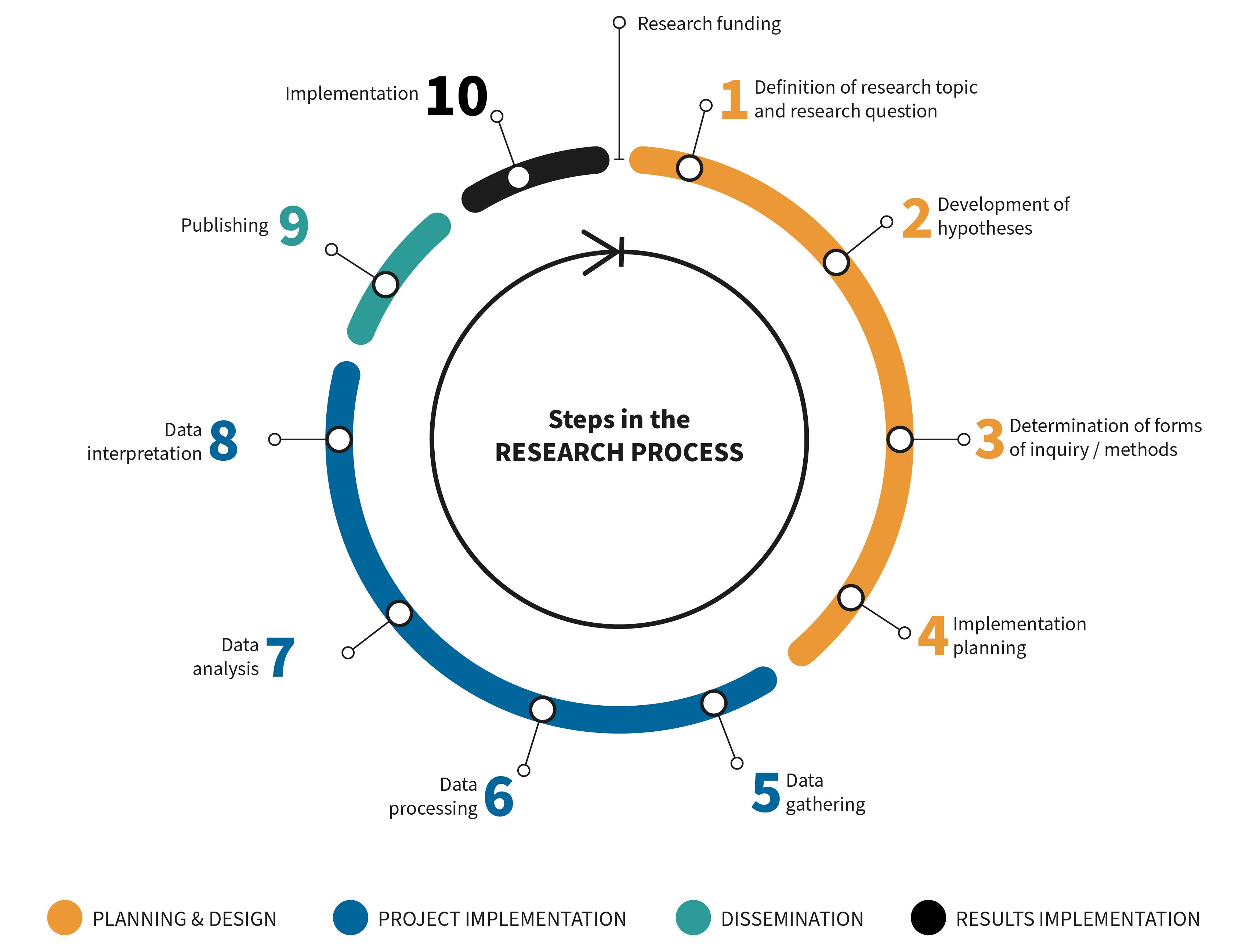Frequently asked questions about Citizen Science
What is Citizen Science?
In Citizen Science, the public plays a key role in researching and discovering new scientific findings. 'Community science', 'participatory research', 'action research', 'crowdsourcing' and 'public engagement' are some of the terms used to describe this research method. Citizen Science is the most widely used term to describe public participation in scientific research.
Who can participate in Citizen Science?
Anyone who voluntarily and actively participates in scientific research can be a citizen scientist.
Is prior scientific knowledge necessary?
Citizens do not need any special scientific training to participate in scientific research as citizen scientists. Rather, depending on the project topic, individual everyday experiences, expertise on a very specific topic or simply the desire to get involved in a cause are required. Citizen Science can answer questions that could not be answered without the participation of citizens.
How can participation look like?
Citizen Science projects can involve various forms of participation. In some projects, citizen scientists are involved from start to finish, in others only selectively. Complex tasks are often broken down into smaller ones so that people with different skills, interests, locations and access to technology can participate in projects. Crowdsourcing - the gathering of information by a large number of people ("crowd") - allows important questions to be answered more quickly based on clear guidelines. At the same time, it opens doors for people from the general public who want to get involved in research and the associated socio-political issues.
What motivates people to participate in Citizen Science projects?
Citizen Science is usually supported by public authorities, universities, non-profit organizations, commercial enterprises and start-ups. Citizen Science promotes research in a range of disciplines, from astronomy to zoology, and actively involves people with different motivations and also special knowledge or experience:
- Citizen Science is fun and can be linked to a hobby (e.g. natural history, art, history).
- Citizen Science offers the opportunity to learn new things and make a significant scientific contribution.
- Participants connect with other people with similar interests or experiences and have the opportunity to contribute their views and knowledge to the research.
- The results of the research can be of importance for the health of the participants (e.g. Long Covid Citizen Science Board).
- The results of the research can be important for the participants' lives (e.g. ZüriAct).
What can be achieved with Citizen Science?
Millions of citizen scientists are driving scientific research in many fields. As volunteers, they help natural scientists, ecologists, zoologists and others track animal movements in their backyard or remotely by counting and identifying animals from online camera trap images.
They help chemists, social scientists, virologists, computer scientists, medical professionals, educators and government agencies when they test water and air quality in their area, monitor light pollution by counting stars, or assist in predicting flu and COVID-19 outbreaks by anonymously sharing symptoms and playing online games to train computers to recognize patterns.
Citizen scientists may be experts in a particular area of life and may have had experiences that are central to research. In projects in which citizen scientists are more closely involved in research, they can contribute their individual perspectives, questions and experiences and thus help to ensure that research is socially relevant.
Citizen Science is also economically interesting!
A 2015 study by Theobald et al. estimated the dollar value of Citizen Science. In an inventory of 388 projects, the researchers found that:
- 1.36 million to 2.28 million citizen scientists volunteered an average of 21-24 hours per person per year. Many science projects operate on a shoestring budget, and access to volunteers can make the difference between completion or non-completion.
- the total economic revenue amounted to between 667 million and 2.5 billion dollars annually.
Citizen Science brings many other social benefits!
Citizen Science enables people from all walks of life to actively learn more about the world and engage with topics that interest them or are close to their hearts. The US National Academies' report, "Learning Through Citizen Science. Enhancing Opportunities by Design", highlights the following societal benefits of Citizen Science.
Citizen Science:
- enables people with different motivations to participate in research.
- widens the circle of those who can contribute to research and provides an opportunity to introduce new processes, observations, data and epistemologies to science.
- offers participants the opportunity to learn about data, data analysis and data interpretation.
- offers participants the opportunity to learn about science and scientific thinking.
What types of Citizen Science projects are there?
Citizen Science projects can be roughly divided into three categories: contributive, collaborative and co-creative projects. The focus here is on the extent to which citizen scientists are involved in the individual phases of a research project.
Inhaltlich angepasst von Shirk, J. L., H. L. Ballard, C. C. Wilderman, T. Phillips, A. Wiggins, R. Jordan, E. McCallie, M. Minarchek, B. V. Lewenstein, M. E. Krasny, und R. Bonney. 2012. Öffentlichkeitsbeteiligung in der wissenschaftlichen Forschung: ein Rahmen für eine bewusste Gestaltung. Ökologie und Gesellschaft 17(2): 29.
What phases do Citizen Science projects usually go through?
By participating in research projects as a citizen scientist, you gain practical experience in scientific work. This is a specific way of making observations, asking and answering questions that can also be helpful in everyday life.
It is not necessary to know and understand all research phases in detail, but it helps to have a general understanding of research processes. A general overview of the individual steps helps to recognize the overarching goals of Citizen Science projects. This will help you understand how your work fits into the larger framework of the project.
In the graphic below you can see the different phases that research projects usually go through. As a citizen scientist, you can be involved to varying degrees in the respective project phases and take on different tasks.
© Citizen Science Zurich; Ursina Roffler
Where can I find Citizen Science projects?
On our webpage you can find many projects, some of which you can take part in, on our project page.
You can also find information on our current trainings, funding and advisory services as well as helpful templates and manuals.
Are you curious about how Citizen Science can be used in schools or museums or would you like to get exciting first-hand insights from researchers into their project work? In our blog, we report on current topics and offer insights into research projects. You can also sign up for our newsletter to make sure you don't miss anything. There's a lot to discover!

